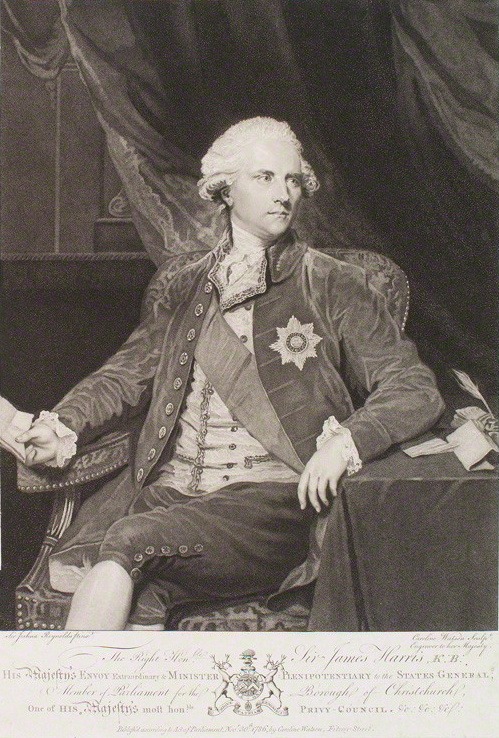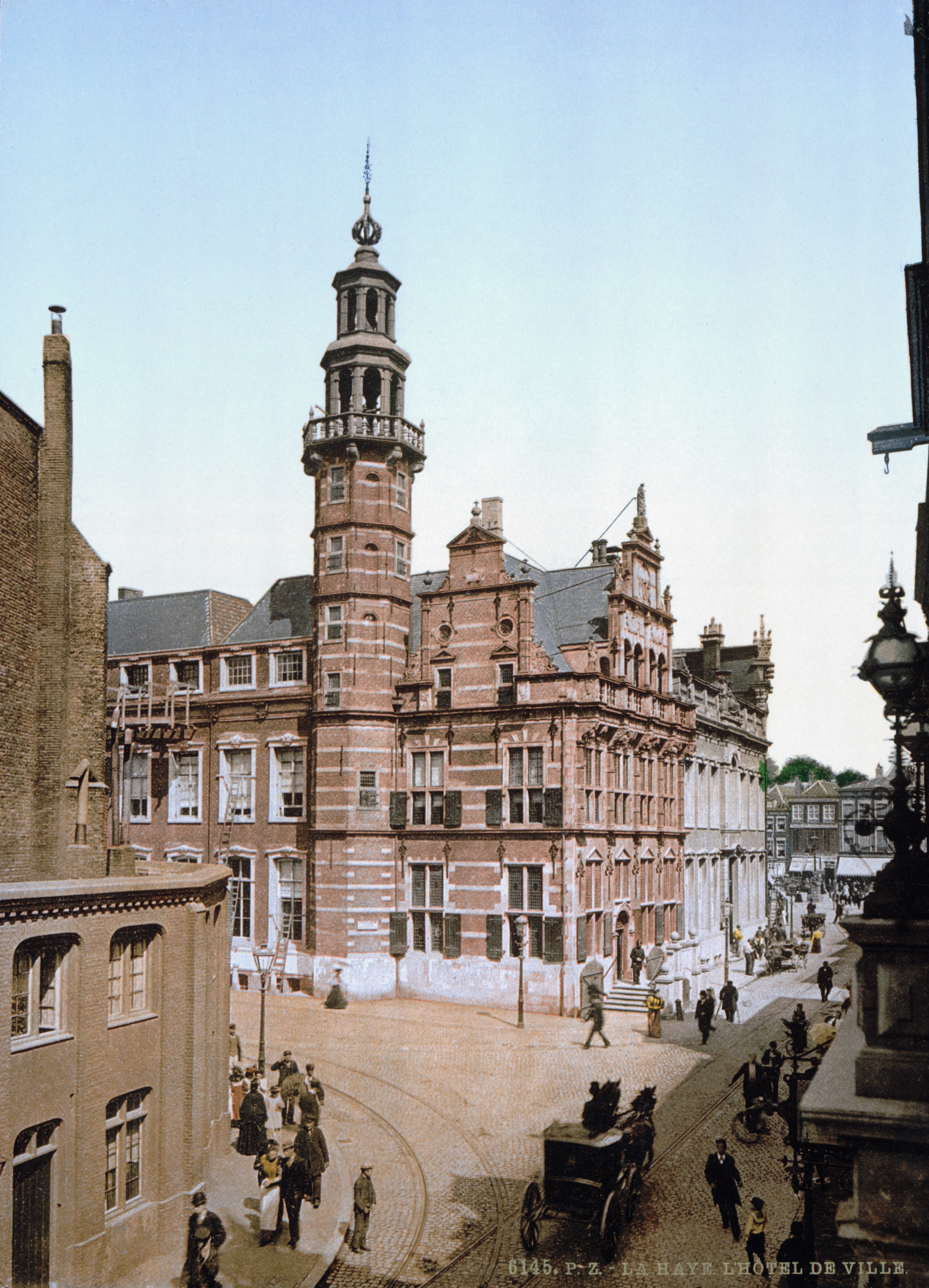|
Prussian Invasion Of Holland
The Prussian invasion of Holland was a military campaign under the leadership of Charles William Ferdinand, Duke of Brunswick, against the rise of the democratic Patriottentijd, Patriot movement in the Dutch Republic in September–October 1787 with the aim of disempowering the patriots and disarming the Free Corps, as well as reinstating William V of Orange as hereditary stadtholder in the Dutch Republic. Background On 7 June Johann Friedrich von Salm-Grumbach, Von Salm-Grumbach was appointed by the Defence Committee in Woerden as commander-in-chief and Quint Ondaatje as liaison officer of the troops in Holland. Salm was not recognized by all officers, and his new powers were legally controversial. On the 28 June, he marched to Woerden to capture Wilhelmina of Prussia, Princess of Orange, princess Wilhelmina of Prussia, the wife of the Prince of Orange. At the end of July Salm ordered conquering Palace Soestdijk and besieging Amersfoort. First came the arrest at Bonrepas ... [...More Info...] [...Related Items...] OR: [Wikipedia] [Google] [Baidu] |
Leidsepoort
The Leidsepoort is a former city gate in Amsterdam, the Netherlands, located on what today is Leidseplein square. It was built in 1664 after a design by the city architect Daniël Stalpaert in 1664. It was torn down for traffic purposes in 1862. about the Leidsepoort on tourist website (on the history of the Leidseplein) References External links * {{coord, 52.364242, N, 4.882978, E, type:landmark_region:NL, display=title City gates History of Amsterdam Gates in the Netherlands Former buildings and structures in the Netherlands 1664 establishments in the Dutch Republic ...[...More Info...] [...Related Items...] OR: [Wikipedia] [Google] [Baidu] |
Woerden
Woerden () is a city and a municipality in central Netherlands. Due to its central location between Amsterdam, Rotterdam, The Hague, and Utrecht, and the fact that it has rail and road connections to those cities, it is a popular town for commuters who work in those cities. History The river Oude Rijn used to flow through the city center of Woerden, but in 1960 the old river was diverted around the city center. The city has a long and rich history in cheese making and trading; for years Gouda cheese for domestic and international use has been produced in this region. Woerden still holds its authentic (since 1885) cheese market at the market place in its center. Roman castellum Woerden is situated on the river Oude Rijn, near the confluence with the former stream. The lower stretch of the Linschoten stream from Montfoort and Linschoten to Woerden silted up a long time ago and its flow was diverted through the Lek and Hollandse IJssel rivers, but at one time it was an ... [...More Info...] [...Related Items...] OR: [Wikipedia] [Google] [Baidu] |
James Harris, 1st Earl Of Malmesbury
James Harris, 1st Earl of Malmesbury (21 April 1746 – 21 November 1820), was an English diplomat. Early life (1746–1768) Born at Salisbury, the son of James Harris, an MP and the author of ''Hermes'', and Elizabeth Clarke of Sandford, Somerset.H. M. Scott, �Harris, James, first earl of Malmesbury (1746–1820)��, ''Oxford Dictionary of National Biography'', Oxford University Press, 2004; online edn, May 2009, accessed 7 August 2011. He was educated at Winchester, at Merton College, Oxford and did Law and History at the University of Leiden (1765-1767). Early diplomatic career: Spain (1768–1771) Harris arrived in Spain in December 1768 and became secretary to the British embassy at Madrid, and was left as ''chargé d'affaires'' at that court on the departure of Sir James Grey in August 1769 until the arrival of George Pitt, afterwards Lord Rivers. This interval gave him his opportunity; he discovered the intention of Spain to attack the Falkland Islands, and was instrume ... [...More Info...] [...Related Items...] OR: [Wikipedia] [Google] [Baidu] |
Gijsbert Karel Van Hogendorp
Gijsbert Karel, Count van Hogendorp (27 October 1762 – 5 August 1834) was a liberal conservativeJan de Jongste: ''Van Hogendorp'', article in th''Cultureel Woordenboek. Nederlandse geschiedenis 1500 – 1813'' "Van Hogendorp werd 'van conservatief tot liberaal'." and liberal Dutch statesman. He was the brother of Dirk van Hogendorp the elder and the father of Dirk van Hogendorp the younger. Early life and education Gijsbert Karel van Hogendorp was born in Rotterdam into a regent family. A few years after his birth, his father Willem left for the Dutch East Indies in search of riches, but he would never return, as his ship sank on the way back. Wilhelmina of Prussia, Princess of Orange, consort to the Stadtholder William V, concerned herself with the fate of the young Gijsbert and his older brother Dirk, and arranged an education for them at the cadet corps in Berlin. He graduated as an officer but did not particularly like his new job in the Prussian military. He later b ... [...More Info...] [...Related Items...] OR: [Wikipedia] [Google] [Baidu] |
The Hague
The Hague ( ) is the capital city of the South Holland province of the Netherlands. With a population of over half a million, it is the third-largest city in the Netherlands. Situated on the west coast facing the North Sea, The Hague is the country's administrative centre and its seat of government, and has been described as the country's ''de facto'' capital since the time of the Dutch Republic, while Amsterdam is the official capital of the Netherlands. The Hague is the core municipality of the COROP, Greater The Hague urban area containing over 800,000 residents, and is also part of the Rotterdam–The Hague metropolitan area, which, with a population of approximately 2.6 million, is the largest metropolitan area of the Netherlands. The city is also part of the Randstad region, one of the largest conurbations in Europe. The Hague is the seat of the Cabinet of the Netherlands, Cabinet, the States General of the Netherlands, States General, the Supreme Court of the Neth ... [...More Info...] [...Related Items...] OR: [Wikipedia] [Google] [Baidu] |
Nijmegen
Nijmegen ( , ; Nijmeegs: ) is the largest city in the Dutch province of Gelderland and the ninth largest of the Netherlands as a whole. Located on the Waal River close to the German border, Nijmegen is one of the oldest cities in the Netherlands and the first to be recognized as such in Roman times. In 2005, it celebrated 2,000 years of existence. Nijmegen became a free imperial city in 1230 and in 1402 a Hanseatic city. Since 1923 it has been a university city with the opening of a Catholic institution now known as the Radboud University Nijmegen. The city is well known for the annual International Four Days Marches Nijmegen event. Its population as of 2024 was 187,011. Population centres The municipality is formed by the city of Nijmegen, incorporating the former villages of Hatert, Hees and Neerbosch, as well as the urban expansion projects in Veur-Lent, Nijmegen-Oosterhout and Nijmegen–Ressen, all situated north of the river Waal. Proximity of border ... [...More Info...] [...Related Items...] OR: [Wikipedia] [Google] [Baidu] |
Bonrepas
Bonrepas is a hamlet in the Dutch province of South Holland. It is a part of the municipality of Krimpenerwaard, and lies about 11 km southeast of Gouda. The statistical area "Bonrepas", which also can include the surrounding countryside, has a population of around 120.Statistics Netherlands (CBS)''Statline: Kerncijfers wijken en buurten 2003-2005'' As of 1 January 2005. Until 2015, Bonrepas was part of Vlist __NOTOC__ Vlist () is a village and former municipality in the western Netherlands, in the province of South Holland. As of 2015, it is a part of the municipality of Krimpenerwaard. Description Vlist is named after the river with the same name, .... References Populated places in South Holland Krimpenerwaard {{SouthHolland-geo-stub ... [...More Info...] [...Related Items...] OR: [Wikipedia] [Google] [Baidu] |
Palace Soestdijk
Soestdijk Palace ( ) is a palace formerly belonging to the Dutch royal family. It consists of a central block and two wings. Although named after the village of Soestdijk, which is largely in the municipality of Soest, Soestdijk Palace is just north of the border in the municipality of Baarn in the province of Utrecht. It was the home for over six decades of Queen Juliana of the Netherlands and her husband, Prince Bernhard, until their deaths in 2004. History De Graeff In the middle of the seventeenth century, the country house on the Zoestdijk was built for Cornelis de Graeff. In the years 1655–1660, de Graeff was involved in the education of William III of Orange, as can be seen from his letters in Soestdijk to the States General and his nephew Johan de Witt. During the summers, the family spent a lot of time at the palace, and de Graeff's sons (Pieter and Jacob de Graeff) played with the young William. In 1674, after the ''rampjaar'', Jacob de Graeff sold the property ... [...More Info...] [...Related Items...] OR: [Wikipedia] [Google] [Baidu] |
Wilhelmina Of Prussia, Princess Of Orange
Princess Wilhelmina of Prussia (''Frederika Sophia Wilhelmina''; 7 August 1751 – 9 June 1820) was the consort of William V of Orange and the de facto leader of the dynastic party and counter-revolution in the Netherlands. She was the daughter of Prince Augustus William of Prussia and Duchess Luise of Brunswick-Wolfenbüttel. Wilhelmina was the longest-serving princess consort of Orange. Background Wilhelmina was brought up by her grandmother. On 4 October 1767 in Berlin, she was married to William V of Orange, the last Dutch Stadtholder. Duke Louis Ernest was instrumental in arranging the marriage of Prince William V with his niece. He immediately observed that the princess craved joint rule, and so was starting to undermine Louis Ernest's dominant position. In long letters she complained about him to her other uncle, King Frederick II of Prussia. As a person, she was proud and politically ambitious; as a princess consort, she dominated her spouse and exerted both over ... [...More Info...] [...Related Items...] OR: [Wikipedia] [Google] [Baidu] |




